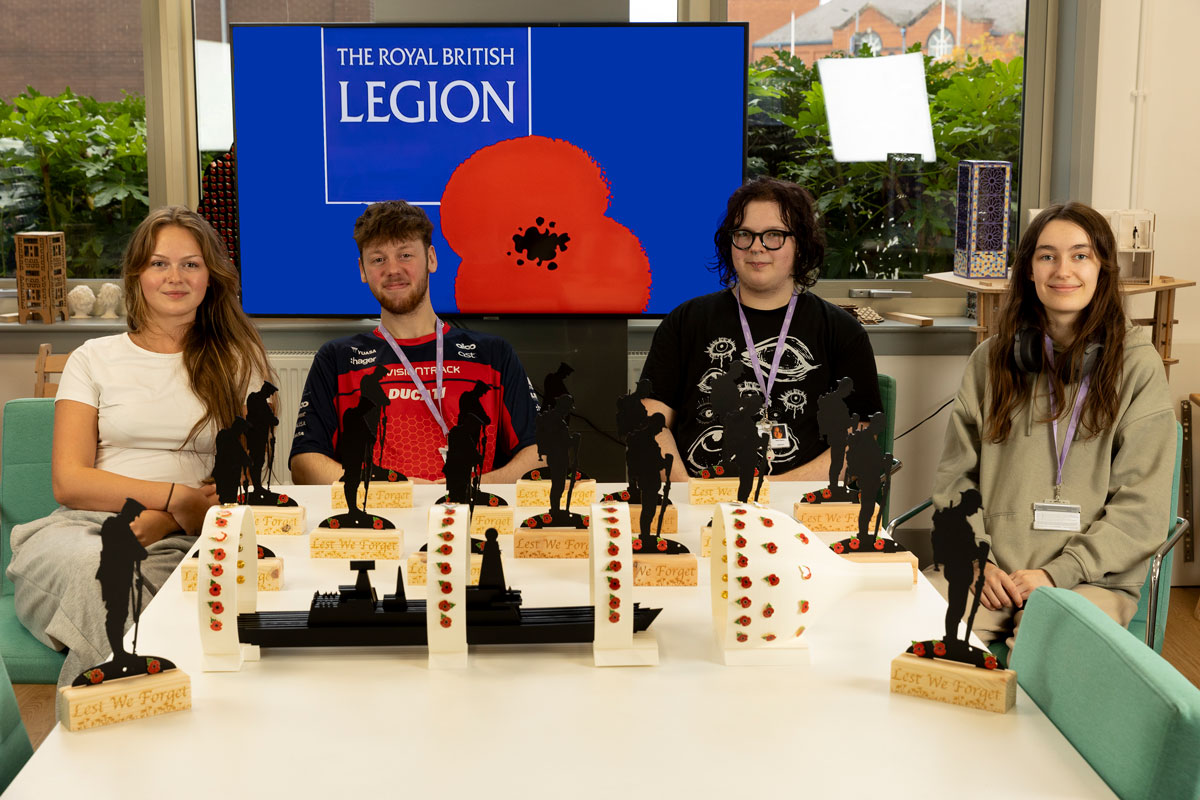Industry heavyweights Ive, Butler-Adams and Akinola back renewed focus to tackle UK skills gap at grassroots
- Design & Technology Association launches ‘Vision Paper’ in collaboration with teachers nationwide proposing new interventions to prevent D&T in schools from entering curriculum obscuritySir Jony Ive KBE, Will Butler‑Adams OBE and Yewande Akinola MBE among many leading figures backing the campaign
The Design & Technology Association, the leading body dedicated to supporting, developing and promoting high-quality design and technology teaching and learning in schools, is today launching its highly anticipated Vision Paper for 2023. Backed by Sir Jony Ive, Will Butler‑Adams OBE and Yewande Akinola among others, the paper highlights the urgent need for revitalising design and technology in the education system and calls for decisive action to address the decline of this key curriculum subject.
Fighting curricular extinction
Design & Technology as a curricular subject is in a state of national neglect. In 2003, there were over 430,000 GCSE entries and over 26,000 A Level entries, compared to a mere 78,000 and just over 10,000, respectively, today. Trained and qualified teachers have also dwindled from 14,800 in 2009 to less than 6,500 presently. It is estimated that the subject is approximately 4 years away from curriculum obscurity, with a historic lack of national leadership and direction precipitating this decline. Furthermore, Design & Technology particularly faces extinction in UK regions with high levels of poverty. As the cost-of-living crisis escalates, the Design & Technology Association fears that the gaping disparity in quality education delivered to the privileged and deprived will be even more pronounced and difficult to bridge.
The UK’s design sector, however, contributed an impressive £97 billion to the GDP last year, with the figure rising to over £400 billion when engineering and manufacturing are included. These sectors collectively employ 1 in 10 workers in the UK, underscoring the significant economic and employment opportunities associated with design and technology.
“We have reached a critical time in design education. Since 2010, the government has embedded a knowledge-rich curriculum across the school system, deprioritizing creative subjects and practical, skills-based education. This is a profound and ignorant mistake. D&T is a uniquely interdisciplinary subject encouraging practical problem solving, collaboration, empathy, and creativity as well as both critical and analytical thinking. Most importantly, it inspires young people to be curious, to trust their own ideas, and equips them to explore solutions to the world’s biggest problems. It is crucial that government, business leaders, educators and governing bodies adopt the recommendations set out in this report.”said Sir Jony Ive KBE HonFREng RDI
To shed light on the state of design and technology education in England, the Design & Technology Association commissioned the Education Policy Institute to conduct extensive research. The resulting report, published in March 2022, served as the foundation for subsequent roundtable discussions involving subject leaders, headteachers, Trust Executive Heads, business and sector leaders, with ongoing engagement and updates provided to the government.
Design & Technology: the great “social leveller”
Tony Ryan, CEO of the Design & Technology Association, was a former school principal and teacher in IT and design & technology. A working-class boy and son of Irish immigrant parents, Ryan was once an academic underperformer, perceived school as pointless, often got into trouble and was finally excluded. An apprenticeship as a car mechanic helped him understand the relevance of the physics and maths subjects he was taught in school, which catalysed his aspirations of becoming a teacher by going back to further education and obtaining a degree. Ryan commented:”Design & Technology, as an educational discipline, is the great equaliser. Personally, it gave me context and purpose to the perceived pointlessness of school, and it provided contemporaries and I with the vital alternative gateway to the academic and professional world. Design and technology are at the heart of innovation, creativity, and problem-solving.”
Ryan continued: “As a subject, it provides the relevant and necessary skills for emerging and grassroots talent who are likely to be the inventors and innovators the UK needs to address some of the biggest issues facing humanity: climate change, pandemics and an ageing society are a few primary examples that need to be tackled urgently with innovative, scalable, and sustainable solutions. It is also key to ensuring the UK stays competitive with a pipeline of homegrown talent with the necessary skill sets needed for an increasingly AI and tech-enabled world. We cannot afford to neglect this vital subject any longer.”
Teachers nationwide unite to inform a vision to rejuvenate D&T
The Vision Paper, entitled “Reimagining D&T,” outlines key recommendations and calls for action from the government. The proposals include increasing the Initial Teacher Training (ITT) bursary to match other STEM subjects, establishing incentives for industry professionals to transition into teaching design and technology, and urging the government to find funding to allow all teachers of design and technology across both primary and secondary sectors access to a protected budget to allow for subject based training. This will enable non-specialists teaching the subject to bring their knowledge and skills up to date and will allow specialists to develop their strengths in identified development areas.
Moreover, the Vision Paper addresses the need for curriculum development in both primary and Key Stage 3 (KS3) levels. It advocates for a greater emphasis on sustainability, energy conservation, design thinking, empathetic design, teamwork, and presentation skills. The proposal also highlights the successful trial of additive manufacturing in primary education and calls for funding to extend this initiative nationally.
The Design & Technology Association aims to secure sponsorship to support the required budget of £165,000 for KS3 contextual work and develop 15 contextual projects within a six-month timeframe. Additionally, the organisation strives to make all proposed initiatives accessible to all teachers, free of charge, to ensure widespread adoption and implementation.
Yewande Akinola MBE commented on the initiative:
“Design and technology education is super crucial for shaping the designers, engineers, and innovators of the future. It equips learners with the right skills to be able to think creatively, solve problems, and apply the right principles in practical ways. By integrating design and technology into the curriculum, we help build a generation of thinkers who can bridge the gap between imagination and practical application- turning ideas into tangible solutions. I truly believe that it helps promote teamwork and collaboration and is an essential ingredient for achieving a Sustainable world.”
In support of its Vision Paper, the Design & Technology Association appeals to the government, educational institutions, and industry leaders to recognise the importance of design and technology education in shaping the future of innovation, economic growth, and the workforce. The organisation firmly believes that an updated curriculum will inspire and engage students, equip them with essential skills both for life and employment, and foster a society that addresses urgent challenges such as the climate crisis and the circular economy.
Will Butler‑Adams OBE, Chief Executive Officer at Brompton Bicycle, added:
“Our world is changing at such a speed that we, and the rich biodiversity of our planet are struggling to adapt. This is not the ‘scaremongering’ from the science community that we ignored fifteen years ago, but the reality we are facing across the world today. Yet the solutions to so many of the world’s challenges exist, it is simply a question of making them happen. To do this we need great minds, to imagine, design and create tomorrow’s solutions to today’s problems. Too often this precious resource is pushed into services, moving money from screen to screen, or constructing yet more complicated legal knots paralysing risk taking and innovation. We are born makers and must nurture and value design and technology as a core tenant of our education system, if we want to live in harmony with planet earth.”











Responses